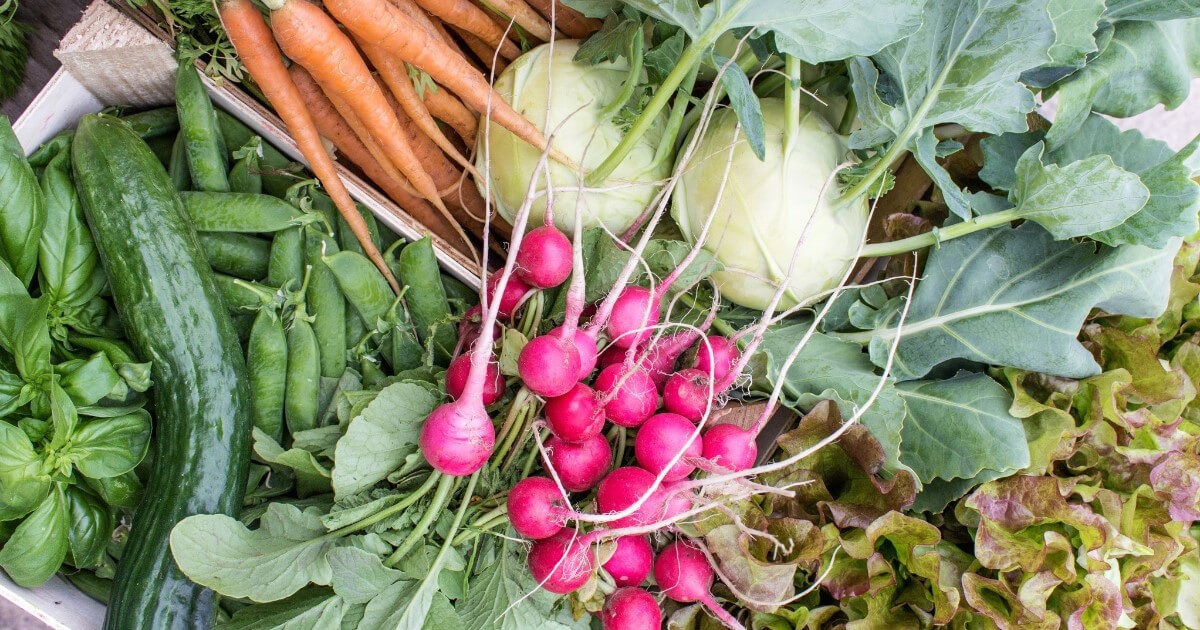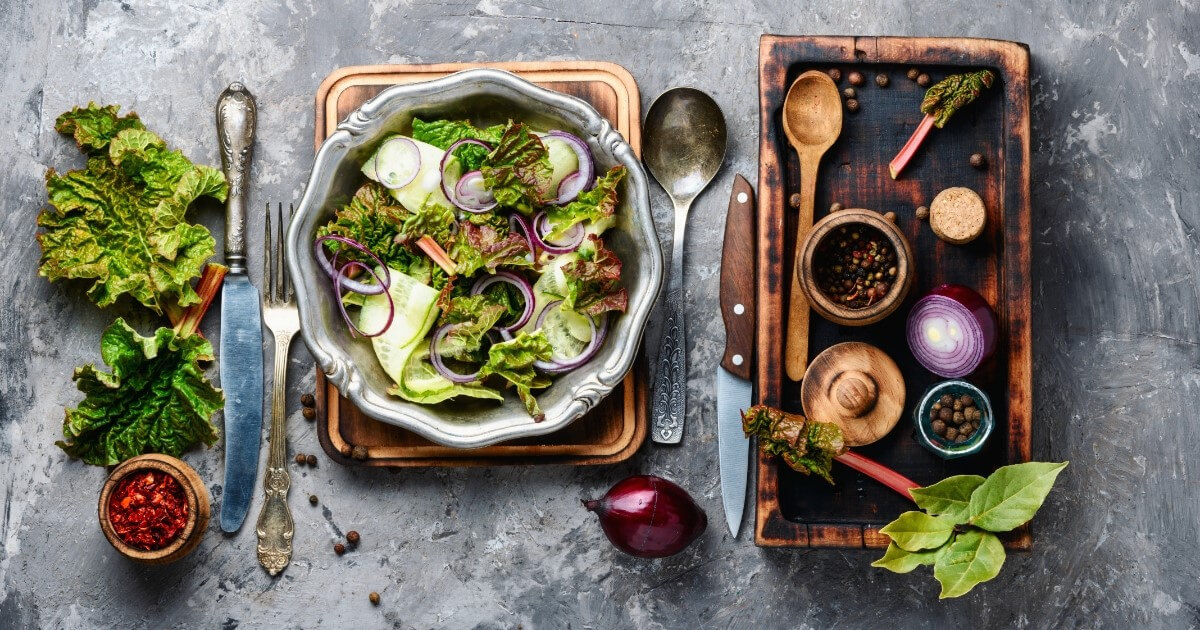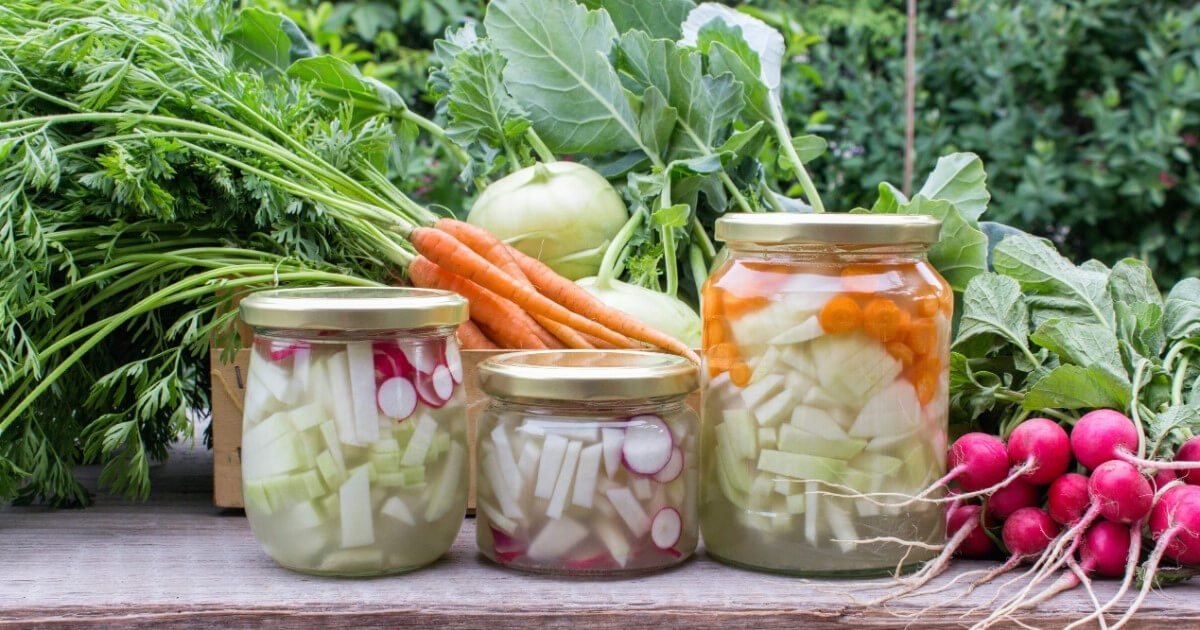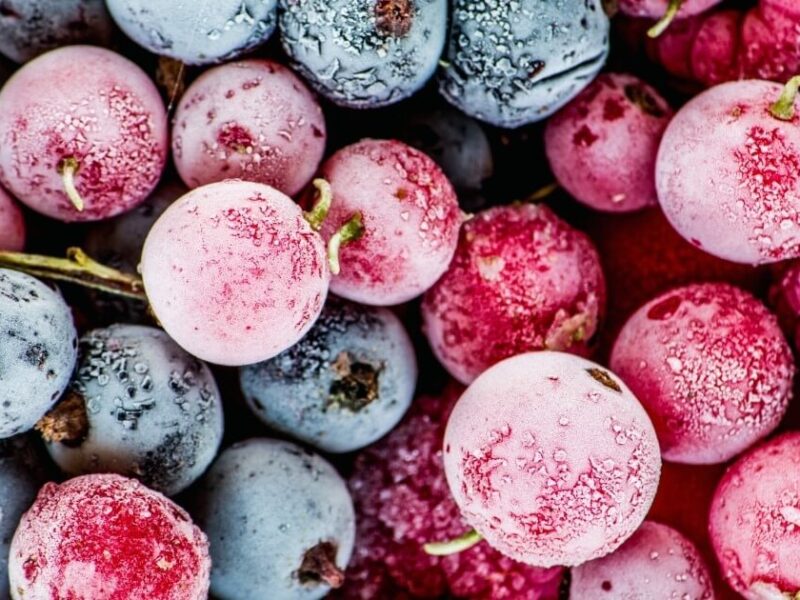
Chef’s Picks for Spring: Seasonal Ingredients and Flavor Trends for 2025 Menus
- Chef’s Favorite NYC Seasonal Ingredients for Spring
- 1. Wild Ramps
- 2. Chives
- 3. Dandelion Greens
- 4. Arugula
- 5. Swiss Chard
- 6. Beets
- 7. Fava Beans
- 8. Peas
- 9. Radishes
- 10. Strawberries
- 10. Rhubarb
- Other Essential Spring Produce to use
- 2025’s Top Food Trends – Kitchen Innovation with Seasonal Flavors
- 1. Botanicals & Floral Infusions
- 2. Layered Spice & Heat: A Fresh Approach to Bold Flavors
- 3. Sustainability & Low-Waste Cooking
- 4. Newstalgia – Classic Comforts with a Twist
- 5. The Rise of Fermented & Pickled Flavors
- Stock Up Your Spring Inventory with Valley View Produce
Spring has officially sprung, and with it, the freshest ingredients of the year. As April’s harvest rolls in, chefs have the perfect opportunity to get creative and redefine seasonal menus. With the industry facing ongoing challenges, seasonal produce offers a fresh, cost-effective way to keep menus exciting and ingredients at their peak.
This month, it’s all about using what’s in season to make your dishes pop and keep your guests coming back for more. Ready to give your menu a refresh? We’ve rounded up the best seasonal produce picks and the top restaurant food trends that are shaping 2025’s spring offerings. Let’s dive in!
Chef’s Favorite NYC Seasonal Ingredients for Spring
With rising food costs, policy shifts, and ongoing labor challenges putting pressure on the industry, seasonal ingredients remain a chef’s best ally. Spring items cost less, offer peak freshness, and deliver exceptional flavor. Here are some of the best chef-recommended ingredients for spring:
1. Wild Ramps
- Flavor: Bold garlicky-onion flavor, highly seasonal and coveted by chefs.
- Uses: Pasta, sauces, pickled for cocktails, grilled as a side dish.
- Alternative: Green garlic or chives (similar flavor, more widely available).
- Storage Tip: Store ramps wrapped in a damp paper towel inside a plastic bag in the fridge. Use within a few days for peak freshness.
2. Chives
- Flavor: Bright, mild onion flavor, perfect for spring garnishes.
- Uses: Salads, compound butters, scrambled eggs, fresh dressings.
- Alternative: Scallions (stronger), garlic scapes (milder with a garlicky edge).
- Storage Tip: Store chives upright in a glass of water like fresh herbs, covering loosely with a plastic bag.
3. Dandelion Greens
- Flavor: Slightly bitter, nutrient-packed, and perfect for balance in rich dishes.
- Uses: Sautéed with garlic, tossed into pasta, added to grain bowls.
- Alternative: Frisée (milder), radicchio (earthier), or escarole (similar bitterness).
- Storage Tip: Wrap in a damp paper towel and refrigerate in a loose plastic bag.
4. Arugula
- Flavor: Peppery bite, great for fresh and warm applications.
- Uses: Salads, sandwiches, blended into pesto.
- Alternative: Watercress (spicier), baby kale (milder, heartier texture).
- Storage Tip: Keep dry and store in a sealed container with a paper towel to absorb moisture.
5. Swiss Chard
- Flavor: Versatile, earthy, and colorful with a slightly sweet taste.
- Uses: Sautéed with garlic, added to soups, braised for side dishes.
- Alternative: Spinach (tender and mild), beet greens (earthier but similar texture).
- Storage Tip: Wrap stems separately from leaves to prevent wilting.
6. Beets
- Flavor: Sweet, earthy, and perfect for roasting, pickling, or raw applications.
- Uses: Roasted beet salads, purees, tartare, beet chips.
- Alternative: Carrots (sweeter), turnips (earthier).
- Storage Tip: Remove greens and store separately to extend shelf life.
7. Fava Beans
- Flavor: Creamy, nutty flavor and a favorite for spring menus.
- Uses: Purees, risottos, salads, spreads.
- Alternative: Edamame (sweeter), lima beans (similar texture).
- Storage Tip: Store pods in the fridge but use quickly after shelling for the best freshness.
8. Peas
- Flavor: Sweet, fresh flavor that signals peak spring produce.
- Uses: Purees, pastas, soups, vibrant side dishes.
- Alternative: Snap peas (crunchier), edamame (creamier).
- Storage Tip: Keep in a perforated bag in the crisper to maintain moisture balance.
9. Radishes
- Flavor: Crisp, peppery bite with vibrant color.
- Uses: Sliced thin in salads, quick-pickled, roasted whole, shaved over tacos.
- Alternative: Turnips (earthier), jicama (crunchier, milder).
- Storage Tip: Store with greens removed in a perforated bag in the fridge to prevent moisture buildup.
10. Strawberries
- Flavor: Sweet, juicy, and the start of spring fruit season.
- Uses: Sweet, juicy, and the start of spring fruit season.
- Alternative: Raspberries (tart), cherries (firmer, sweeter).
- Storage Tip: Store unwashed in a single layer to prevent bruising.
11. Rhubarb
- Flavor: Tart, fibrous stalks perfect for sweet and savory dishes.
- Uses: Compotes, pies, chutneys, cocktails.
- Alternative: Cranberries (tart, best for compotes), green apples (firm texture).
- Storage Tip: Wrap in foil and refrigerate to maintain crispness.
Other Essential Spring Produce to use:
- Watercress: Spicy, ideal for sandwiches and soups.
- Mustard greens: Adds a peppery kick to stir-fries.
- Radicchio: Slightly bitter, great for grilling.
- Turnips: Sweet and earthy, great roasted or pureed.
- Spring onions: Delicate onion flavor, ideal for stir-fries and salads.
2025’s Top Food Trends – Kitchen Innovation with Seasonal Flavors
Diner preferences are shifting, with millennials and Gen Z leading the way toward healthier foods, sustainable options, adventurous flavors, and a touch of newstalgia. Spring’s fresh flavors are a perfect fit for 2025’s food trends, allowing chefs to experiment creatively and create exciting seasonal menus.
From indulgent limited-time offers (LTOs) to irresistible daily dishes, integrating these flavor trends into spring menus can boost sales, attract new diners, and create share-worthy dining experiences. Here’s how chefs are incorporating restaurant food trends in spring for unique menu creations:
1. Botanicals & Floral Infusions
Spring produce pairs naturally with delicate floral and herbal flavors. And in 2025, herbs are showing up in everything from infused oils to house-made syrups. Chefs are blending these botanical flavors with fresh spring ingredients like rhubarb, peas, fava beans, and citrus for refreshing seasonal dishes.
Sweet & Savory Dishes
A rhubarb-rose glaze over roasted chicken, a fava bean and chamomile puree for seafood, or a pea and lemon-thyme risotto bring complexity without overpowering the dish. On the sweet side, honey-lavender panna cotta, a chive blossom and elderflower vinaigrette, or a goat cheese tart with rosemary and blood orange play with herbal and floral notes in unexpected ways. Here are some memorable pairings for your spring menu:
- Lavender & rhubarb: Used in tart glazes, cocktails, or infused honeys.
- Chamomile & peas: Soft florals enhance the sweetness of pea purees.
- Hibiscus & spring onions: Hibiscus’ tangy acidity contrasts beautifully with charred onions in dressings or sauces.
- Edible flowers: Nasturtiums, violets, pansies and elderflowers add a bright, aromatic finish to plates.
Botanical Drinks
Floral notes are also making waves in beverages, from botanical gin cocktails to zero-proof spritzers. With the growing demand for low- and no-alcohol drinks, these ingredients add unexpected depth and freshness. Here are some standout pairings to try this spring:
- Strawberry-basil spritz: A refreshing mix of herbaceous and fruity notes.
- Rhubarb & elderflower gin fizz: Tart rhubarb balances delicate floral aromas.
- Hibiscus cold brew tonics: A vibrant, tangy alternative to lemonade.
2. Layered Spice & Heat: A Fresh Approach to Bold Flavors
Spicy, bold flavors are trending, but don’t expect just heat. Chefs are now using fermentation, smoky notes, layered chili blends and sweet ingredients such as honey to create deeper complexity. Spring’s produce offers the perfect backdrop for these bold yet balanced flavors:
- Fermented chili pastes (like gochujang or chili crisp) add umami to peas and fava beans.
- Mustard greens & radicchio balance bitterness with natural spice.
- Mexican & Southeast Asian influences introduce chili-lime, tamarind, and lemongrass into spring-forward dishes.
- Charred spring onions & citrus zest add brightness and contrast to smoky spice rubs.
3. Sustainability & Low-Waste Cooking
Spring is all about renewal, making it the perfect season to integrate more sustainable practices in the kitchen. And with sustainability being at the forefront of 2025’s food trends, chefs can find creative ways to reduce waste, use local produce, and focus on plant-based offerings:
- Whole-ingredient cooking: Beet tops for sauces, radish greens in soups, and citrus peels in infused syrups – less waste, more flavor!
- Preserving seasonal flavors: Pickling ramps, fermenting rhubarb, and making strawberry shrubs extend spring’s bounty.
- Sourcing locally: Prioritizing local farms and specialty produce suppliers supports the regional food system, ensures peak-season freshness and helps lower the carbon footprint.
- Offering more plant-based dishes: Spring offers an abundance of fresh, nutritious produce that can be transformed into delicious plant-based dishes. Fresh salads, protein bowls, and spring soups are excellent additions to spring menus.
4. Newstalgia – Classic Comforts with a Twist
Nostalgic dishes with a modern upgrade continue to win over diners in 2025. Chefs can add new spins to classic dishes with spring produce. Ramps in a creamy mac and cheese, a strawberry-basil shortcake with whipped mascarpone, or a beet-and-goat-cheese tart with a flaky, buttery crust bring familiar flavors into a fresh new light.
Even classic drinks are getting a refresh. A garden-inspired martini with snap peas and tarragon or a rhubarb-sour beer shandy strikes the perfect balance between comfort and creativity.
5. The Rise of Fermented & Pickled Flavors
Fermentation and pickling aren’t just for winter anymore. With the rising popularity of functional foods, spring is an excellent time to explore innovative fermented offerings. Crisp vegetables and bright fruits lend themselves perfectly to these methods, creating dishes with depth, acidity, and natural umami:
- Quick-pickled ramps & radishes: Ideal for garnishing tacos, grain bowls, or cocktails.
- Fermented strawberries: Used in sauces, desserts, or kombucha-style beverages.
- Miso-marinated spring onions: Perfect for grilled applications.
- Fava bean miso pastes: A unique spring take on traditional umami flavors.
Stock Up Your Spring Inventory with Valley View Produce
Seasonal ingredients offer chefs a fresh palette of flavors to experiment with, from vibrant spring greens to bold, floral-infused beverages. Whether you’re refreshing your menu with the latest trends or staying true to classic seasonal pairings, sourcing high quality produce is key to bringing out the best in every dish.
Working with a trusted wholesale supplier is key to staying on top of your produce game. With Valley View Produce, you have access to a wide range of fresh seasonal produce and specialty items at competitive prices, delivered right to your doorstep.
Contact us today to explore our offerings and bring the best of springs harvest to your kitchen!







